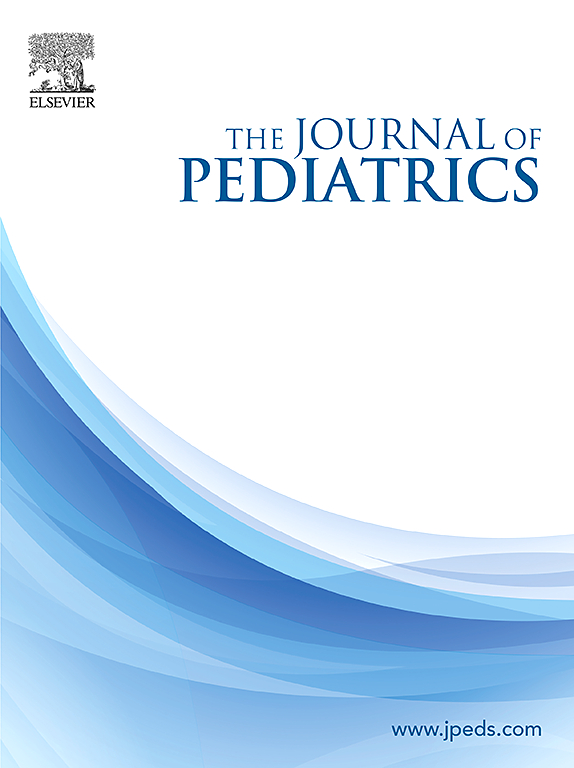Associations of Bronchopulmonary Dysplasia and Infection with School-Age Brain Development in Children Born Preterm
IF 3.9
2区 医学
Q1 PEDIATRICS
引用次数: 0
Abstract
Objective
To determine the association of bronchopulmonary dysplasia (BPD) and culture-positive infection with neurodevelopment and white matter maturation at 8 years of age in children born preterm.
Study design
Prospective cohort study of 164 children born at 24-32 weeks of gestation followed to 8 years of age (89 male, median [IQR] age: 8.24 [8.07-8.58] years). At age 8, IQ (Weschler Abbreviated Scale of Intelligence, second Ed), working memory (Wechsler Intelligence Scale for Children, fifth Ed), visual-motor (Beery-Buktenica Developmental Test of Visual-Motor Integration sixth Ed), and motor outcomes (Movement Assessment Battery for Children-2) were assessed. Diffusion tensor imaging and tract-based spatial statistics were used to assess fractional anisotropy (FA).
Results
Fifty of 164 children had BPD and 72/164 had culture-positive infection. At 8 years, BPD was associated with a 9.8-point decrease in motor (CI −17.9 to −1.8, P = .02) and 6.0-point decrease in visual-motor scores (CI −10.5 to −1.5, P = .009), whereas infection was associated with a 6.3-point decrease in IQ (CI −12.3 to −0.3, P = .04), after adjusting for gestational age and white matter injury volume. BPD was associated with left hemisphere-dominant FA reductions, which were associated with worse motor (P = .000006) and visual-motor (P = .00005) outcomes, whereas infection was associated with bilateral FA reductions, which were associated with lower IQ scores (P = .03) and poorer working memory (P = .01) at 8 years.
Conclusions
This cohort study of children born very preterm suggests that BPD and culture-positive infection are distinctly associated with impaired white-matter development and poor neurodevelopmental outcomes. These findings imply neonatal illnesses impact the brain nonuniformly, suggesting opportunities for targeted intervention.
求助全文
约1分钟内获得全文
求助全文
来源期刊

Journal of Pediatrics
医学-小儿科
CiteScore
6.00
自引率
2.00%
发文量
696
审稿时长
31 days
期刊介绍:
The Journal of Pediatrics is an international peer-reviewed journal that advances pediatric research and serves as a practical guide for pediatricians who manage health and diagnose and treat disorders in infants, children, and adolescents. The Journal publishes original work based on standards of excellence and expert review. The Journal seeks to publish high quality original articles that are immediately applicable to practice (basic science, translational research, evidence-based medicine), brief clinical and laboratory case reports, medical progress, expert commentary, grand rounds, insightful editorials, “classic” physical examinations, and novel insights into clinical and academic pediatric medicine related to every aspect of child health. Published monthly since 1932, The Journal of Pediatrics continues to promote the latest developments in pediatric medicine, child health, policy, and advocacy.
Topics covered in The Journal of Pediatrics include, but are not limited to:
General Pediatrics
Pediatric Subspecialties
Adolescent Medicine
Allergy and Immunology
Cardiology
Critical Care Medicine
Developmental-Behavioral Medicine
Endocrinology
Gastroenterology
Hematology-Oncology
Infectious Diseases
Neonatal-Perinatal Medicine
Nephrology
Neurology
Emergency Medicine
Pulmonology
Rheumatology
Genetics
Ethics
Health Service Research
Pediatric Hospitalist Medicine.
 求助内容:
求助内容: 应助结果提醒方式:
应助结果提醒方式:


